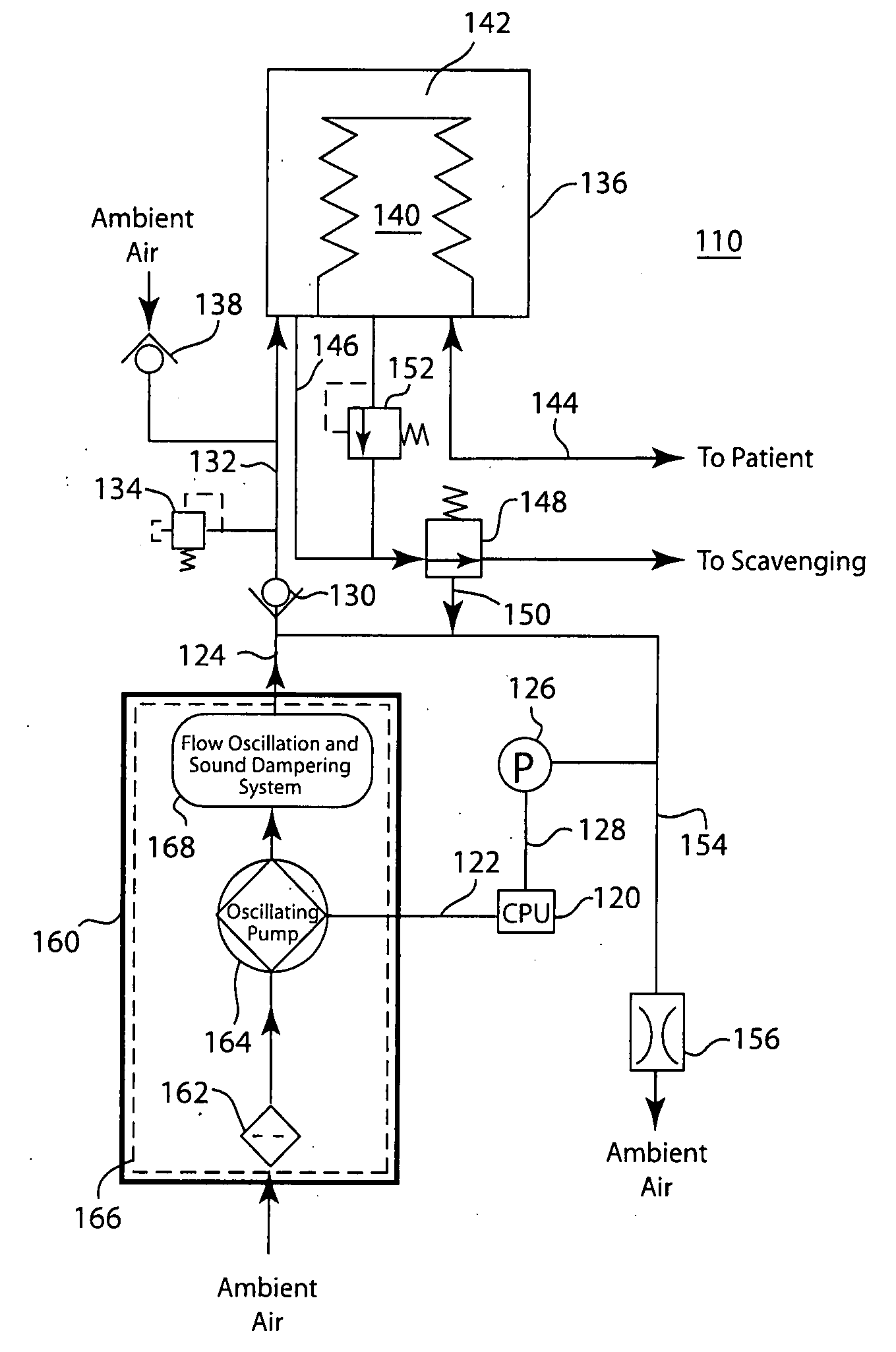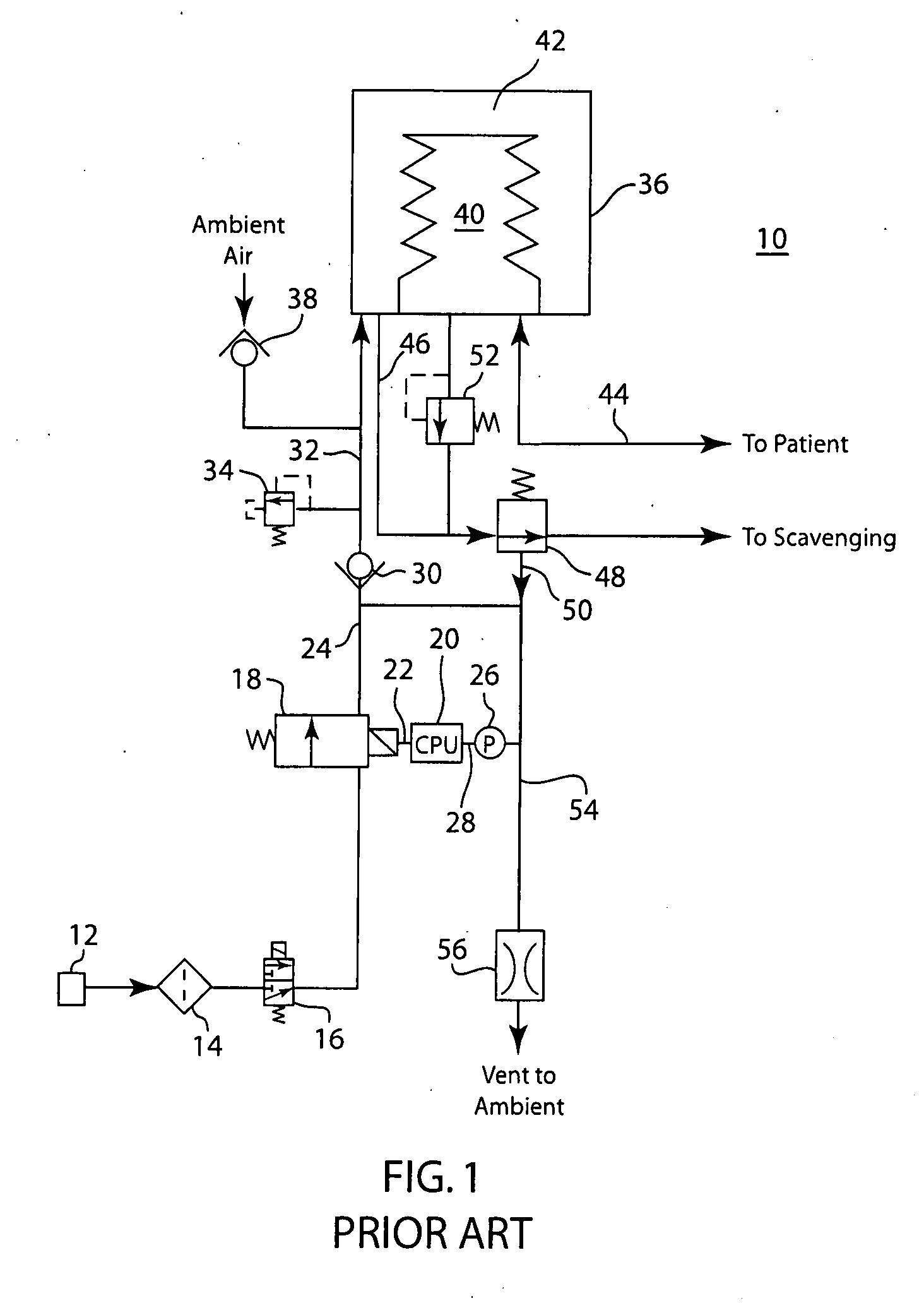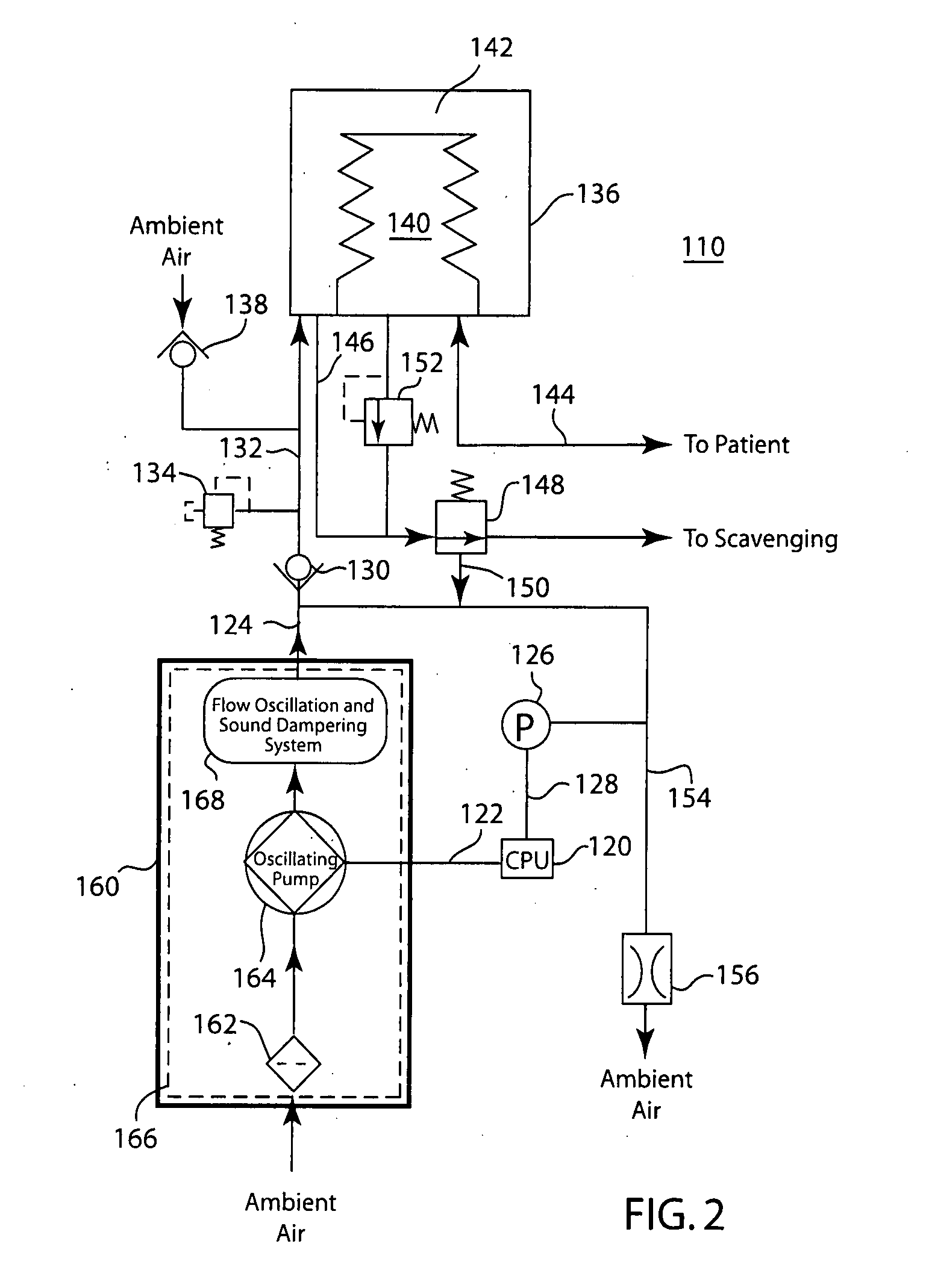Mobile medical ventilator
a medical ventilator and mobile technology, applied in the field of mechanical ventilators, can solve the problems of reducing the portability of the ventilator, affecting the operation of the ventilator, and the patient may spontaneously attempt to breathe, so as to reduce the noise
- Summary
- Abstract
- Description
- Claims
- Application Information
AI Technical Summary
Benefits of technology
Problems solved by technology
Method used
Image
Examples
Embodiment Construction
[0020]FIG. 1 depicts a schematic diagram of a ventilatory system 10 known in the art. A ventilator of this system is described in U.S. Pat. No. 5,315,989 to Tobia, which is herein incorporated in its entirety by reference. In ventilatory system 10, a pressurized source of medical gas 12 is connected to a regulator 14 and a gas inlet valve 16. The pressurized medical gas serves as the drive gas for operating the ventilatory system 10. The pressurized gas flows from the inlet valve 16 to an inspiratory flow control valve 18. Typically, the inspiratory flow control valve 18 is a proportional flow solenoid valve, but many other suitable types of valves exist, including single or multiple pulse-width modulated (PWM) two-position valves. The inspiratory flow control valve 18 is controlled by CPU 20 via line 22. The CPU 20 directs the inspiratory flow control valve 18 to open and close according to the pressure that is desired to be in a first inspiratory conduit 24. The pressure in inspir...
PUM
 Login to View More
Login to View More Abstract
Description
Claims
Application Information
 Login to View More
Login to View More - R&D
- Intellectual Property
- Life Sciences
- Materials
- Tech Scout
- Unparalleled Data Quality
- Higher Quality Content
- 60% Fewer Hallucinations
Browse by: Latest US Patents, China's latest patents, Technical Efficacy Thesaurus, Application Domain, Technology Topic, Popular Technical Reports.
© 2025 PatSnap. All rights reserved.Legal|Privacy policy|Modern Slavery Act Transparency Statement|Sitemap|About US| Contact US: help@patsnap.com



